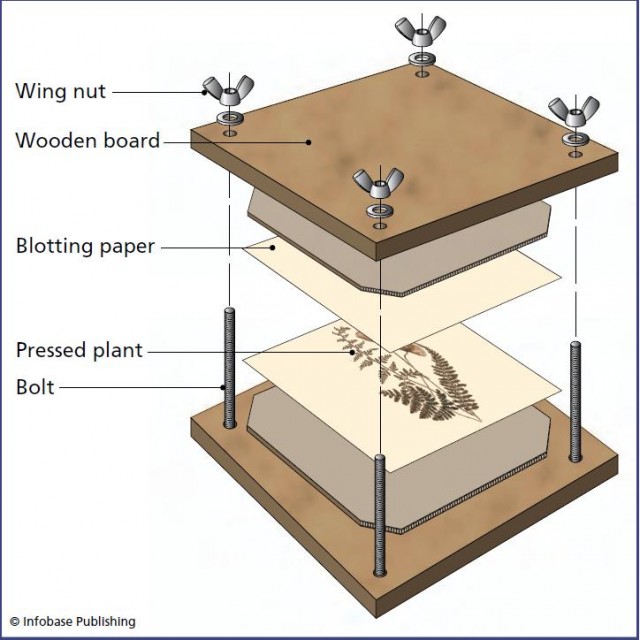Luca Ghini and How to Press Flowers
Gardeners were often avid plant collectors. Highly competitive, they sought to impress their rivals by their displays of the latest fashions in plantings and of plants that had only recently arrived in their corner of the world. The landscaped gardens with which 18th-century landowners delighted their houseguests were often stocked with exotic trees, and the owners of formal gardens liked to show off the latest blooms, occasionally paying extortionate sums for their plants.
Gardens were meant to impress as well as to delight the eye. They were not, however, intended to be museums that preserved plant diversity by growing plants for educational or research use or for what would now be called conservation. Those functions were performed by botanical gardens, but even the largest botanical garden could not aspire to grow specimens of every plant species—far less varieties of those species. They lacked the space.
The solution to this difficulty was to hold plant collections in the form of dried and pressed plants—herbaria. Many plants can also be stored as seeds. A seed bank is a store where plant seeds are maintained at a constant temperature of 32°F (0°C) and a relative humidity—the amount of water vapor present in the air as a percentage of the amount required to saturate the air at that temperature—of about 4 percent (which is extremely dry). Many seeds remain viable for up to 20 years under these conditions, and the seed bank can be made permanent by sowing seeds toward the end of their storage period, growing the plants, and harvesting fresh seeds to restock the bank. Not all plants can be conserved in this way. Recalcitrant seeds do not survive being dried and germinate rapidly; most tropical rain forest plants produce recalcitrant seeds and can be preserved only as growing specimens. The possibility of using seed banks to store plants was not discovered until early in the 20th century, however; the Russian geneticist Nikolai Vavilov established one of the first.
Herbaria suffer no such limitation. They preserve entire plants, and they have been in use since early in the 17th century. Herbarium specimens are prepared by a method that has remained largely unchanged since that time. A plant to be stored in this way was picked, then laid out on a sheet of absorbent paper in such a way as to display its important features, and a label placed beside it giving the name of the plant, usually in Latin and the botanist's native language. A second sheet of paper was placed on top to cover it, and then other plants were added, each one arranged between two sheets of paper, to form a small stack of specimens. The stack was then placed in a press, where it was held under pressure until it had thoroughly dried. The following illustration shows how simple a plant press can be. Finally, the specimens were carefully removed from the press, separated from their backing sheets, and glued or sewn onto a sheet of paper or board. The sheets might then be bound into a volume containing plants of a particular type.

The Flemish anatomist and botanist Adriaan van den Spiegel (1578–1625) was probably the first scholar to describe how to make a herbarium, complete with a recipe for a suitable glue. This was contained in his book Isagoge in rem herbarium libri duo (Introduction to matters relating to the herbarium in two books), the two volumes of which were published in 1606 and 1608. The person who popularized herbaria, however, was the Italian physician and botanist Luca Ghini, the director of the botanical gardens at Pisa and Florence. Ghini published no books, but he was the inspired teacher of several eminent Italian botanists, including Andrea Cesalpino (1519–1603), Pietro Andrea Mattioli (1501–77), and Ulisse Aldrovandi (1522–1605). Ghini taught his students to preserve plants in this way, and they passed on his method to their colleagues and students. In 1532, one of his former students, the botanist and artist Gherardo Cibo (1512–1600), assembled a herbarium that still exists. Luca Ghini was born in 1490 in Imola in the Italian province of Bologna, in the northeast of the country. His father was a lawyer.
Ghini studied medicine at the University of Bologna, and in 1527 he became a lecturer there in medicinal botany. In 1539 the university established a chair in that subject, and Ghini was the first professor, but he remained subordinate to the professor of medicine to such a degree that he was unable to obtain permission to create a university physic garden. In 1543 Cosimo I de'Medici (1519–74), the grand duke of Tuscany, invited Ghini to create a botanical garden at the University of Pisa. Ghini moved to Pisa in 1544, and in the same year he made his first herbarium—although that is not what he called it. In the 16th century it was called hortus siccus (dry garden) or hortus hiemalis (winter garden); the term herbarium was introduced in the late 18th century. Ghini returned to Bologna in 1554 and died there on May 4, 1556.
- Lancelot “Capability” Brown
- Formal Gardens, Restoring Order to a Chaotic World
- Identifying Plants: The Herbal Becomes the Flora
- The Doctrine of Signatures
- The Apothecaries’ Garden at Chelsea
- Monastic Gardens
- The Bauhin Family
- Leonhard Fuchs, Fuchsia, and the First Botanical Glossary
- Nicholas Culpeper and His Herbal Best Seller